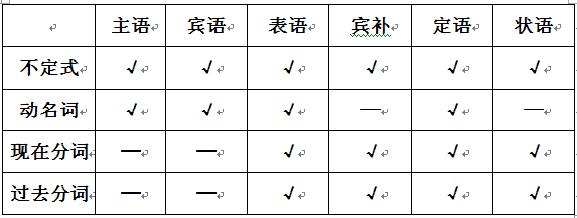基本概述:
I. 定义: 不用于做谓语的动词叫非谓语动词.
II. 基本形式:
1. 不定式:

不定式的基本形式
2. 动名词:

动名词的基本形式
3. 现在分词: 基本形式同动名词:
4. 过去分词: done
III. 基本特点:
1. 具有动词的部分特点: 可带自已的宾词或状语构成短语. 例如:
不定式短语: to shake hands with people in the office every morning
动名词短语: feel sorry for having done something wrong
现在分词短语: The studios are still busy today, producing more and more interesting films.
过去分词短语: In the 16-19 age group, 32% of women smoke, compared to 28% of men.
2.可与 not 构成否定式: not to do, not doing, not done.
注:(1) 不定式的否定式not 必须放在to前。
如:in order not to do sth.(正硧); not in order to do sth.(错误)
not to have done sth. (正硧); to have not done sth. (错误)
(2) 动名词的否定式not 必须放在带-ing的这个词前。
如:not being done (正硧); being not dome(错误)
not having been done(正硧); having not been done(错误)
3.不定式可与疑问词或连接词 “whether”构成短语。(起名词作用)
what to do; where to go; whether to do it;...
4.可带自己的逻辑主语,构成复合结构或独立主格结构:
for/of sb to do sth. (不定式的复合结构)
my/me //n.'s/n. doing sth (动名词的复合结构)
(with)+n.+ pr.p./p.p (现在/过去分词的独立结构)
IV. 在句中的句法功能:

 加载中,请稍侯......
加载中,请稍侯......
精彩评论